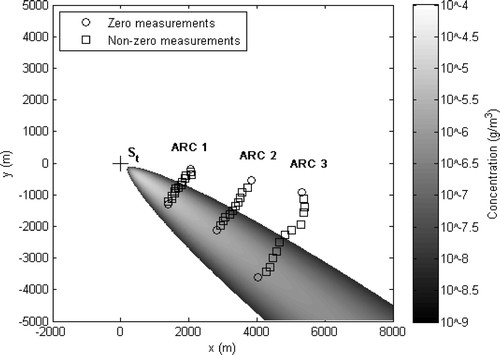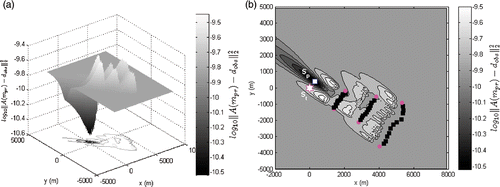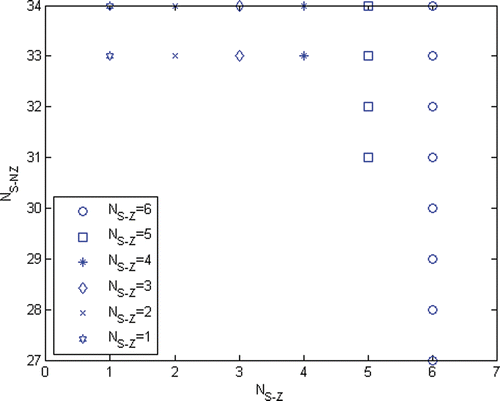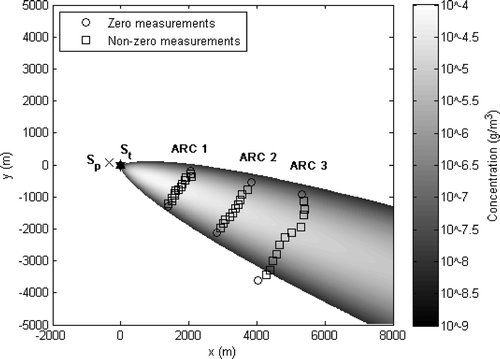Figures & data
Table 1. Salient features of various inversion techniques used to solve atmospheric source characterization problems.
Figure 1. Schematic depicting the sensor positioning and the number of non-zero (□) and zero (○) measurements recorded for TCTE on 19 October. Also shown is the plume spread predicted by the GPM for true source parameters (mt). ‘St’ is the true source location.

Figure 2. (a) Surface of the misfit functional for TCTE, (b) 2D contour of the misfit functional for TCTE data with the true (St) and predicted (Sp) source locations.

Figure 3. The number of zero (NS−Z) and non-zero (NS−NZ) measurements that should be satisfied to obtain initial iterates in the C-C-D region for TCTE. The details of this figure are highly problem-dependent. They also depend on the plume spread parameters chosen.

Table 2. Computed inversion model parameters for TCTE.
Table 3. Comparison of the predicted concentrations from Newton's method with Copenhagen data (12 : 13 h–12 : 33 h on 19 October 1978) and 16.
Figure 5. Plume spread predicted by model parameters from inversion. The squares (□) and the circles (○) represent sensors that recorded non-zero and zero measurements. ‘St’ (hexagon – ☆) is the true source location in, and ‘Sp’ (cross – ×) the location predicted by Newton's method.

